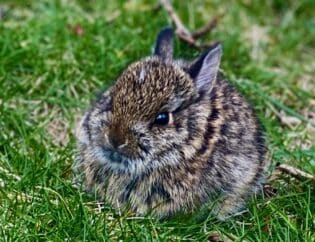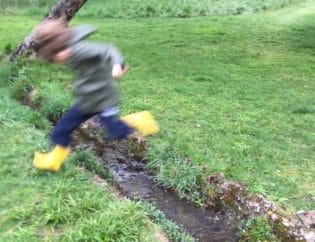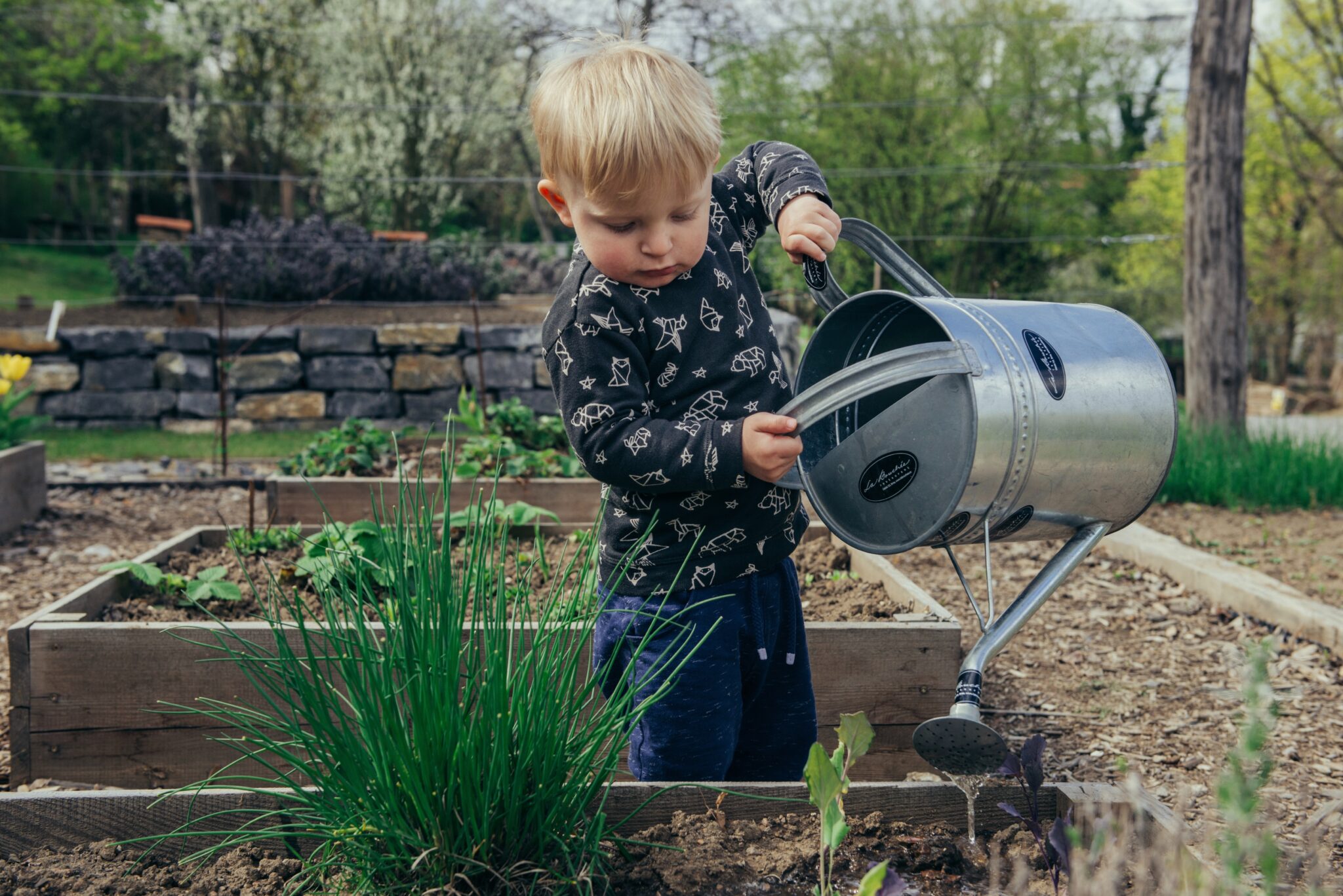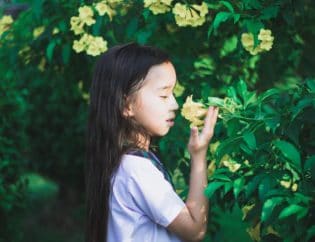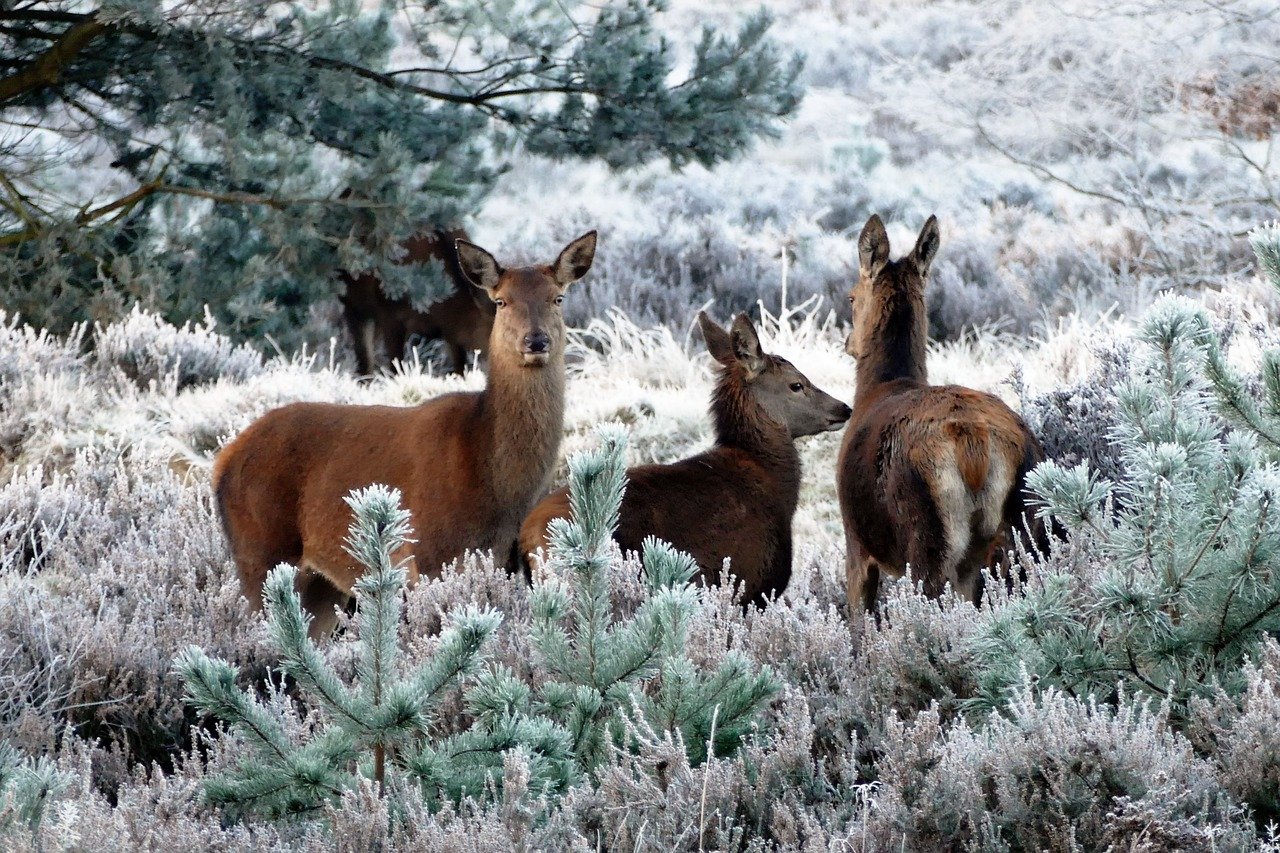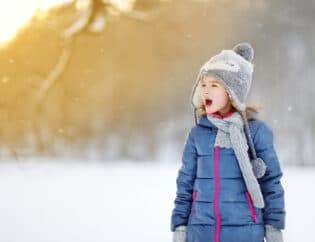
Like us, the natural world runs at a slower pace in the winter. Fewer creatures are out and about. Plants are reserving their energy for brighter, sunnier days. Ponds and lakes are frozen with few signs of life in sight. It seems that most of nature is taking a bit of a time out.
But, for the child interested in the natural world, this slowed-down season offers much to take in, and at a much more peaceful pace. Winter is actually a fascinating time to learn about nature’s amazing adaptations and survival strategies.
A less active landscape means more effort is needed to find clues from nature. Just like a detective uses all of their senses to gather clues, good sensory detection is also a skill that any naturalist needs. So put on your nature detective hat as we head outside & explore winter's natural landscape together!
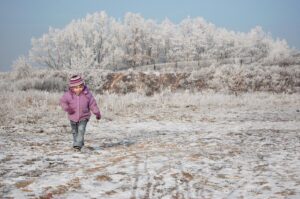
The first thing to do in order to gather winter nature clues is to use our senses to get a sense of what is around us. You can look for clues just about anywhere: your backyard, a local nature center, parks, trails, and wildlife refuges are all great places to go to look.
When you head outside, notice what you see, or, rather, what you don't see. Do you see and hear birds tweeting, squirrels chirping or insects buzzing? Probably not too many. That’s because many animals may have migrated, hibernated, or are keeping warm hidden away in their burrows.
On a winter’s day fresh after a snowfall, you will likely notice silence. The reason is that fresh snow absorbs sound, lowering ambient noise over a landscape because the trapped air between snowflakes attenuates vibration.
As for insects, most will spend the winter as eggs or pupae. But you can see these if you look! Egg cases and cocoons can be found by looking closely at plant stems or the underside of leaves which remain on trees and shrubs.
While we can’t see many animals themselves, we can look for signs they leave behind. Looking for the visual cues animals leave behind can help your child gain an understanding of what the birds, mammals, insects, and other creatures are up to during the winter season.
Food
Animals have to eat to survive. During the winter, you may not catch a critter in the act but if you look for signs of feeding activity, you will find them.
Be sure to look at all levels of the forest. From the ground to the tips of the treetops. Starting at the bottom, perhaps about one to two feet from the ground, look at the state of twigs on trees or shrubs. Twigs bit away hint that rabbits or deer have been grazing. As you take a closer look at the bite, notice if the twigs are cleanly bitten off at an angle. If so, a rabbit has been busy eating. Rabbits, hares, and voles will munch on tender bark around the base of young trees and shrubs.
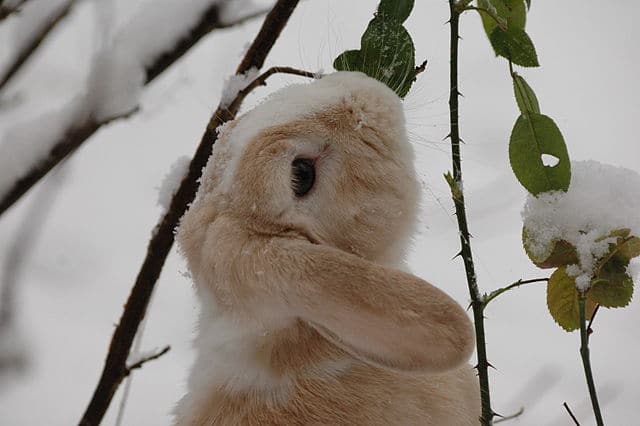
If you come across a twig that is bitten off but cut off in a jagged way, the bite is likely from a deer as they tend to tear twigs off as they bite. In some areas, especially cedar forests, a clear browse line can be observed where whitetail deer have fed on the green branches. Examine the buds of red dogwood shrubs and other low branches for signs of deer browsing. In some places, nearly every fresh bud on every twig will be nipped off during winter by hungry deer.
Grazers such as deer, elk, bison, and other grazing animals will still go on grazing even when the landscape is covered in snow. These mammals use their hooves and muzzles to clear snow away from plants they need to eat to survive.
Wild turkeys, squirrels, and whitetail deer are scratchers, which means that they dig out snow to the surface to find acorns, hickory nuts, and other items beneath the snow.
Pileated woodpeckers are well-known bark strippers as well, and while they do not actually eat the bark, they shred large areas along trunks and branches to reach beetles and grubs inside the wood.
You also may discover other signs of feeding animals. Owl pellets can often be found beneath overhanging perches where owls like to feed. You might even find the “leftovers” from a meal such as a bit of fur or feathers, or some other part of the prey. You may also discover the tell-tale feeding stumps used by red squirrels. These are characterized by large piles of shredded pine cones.
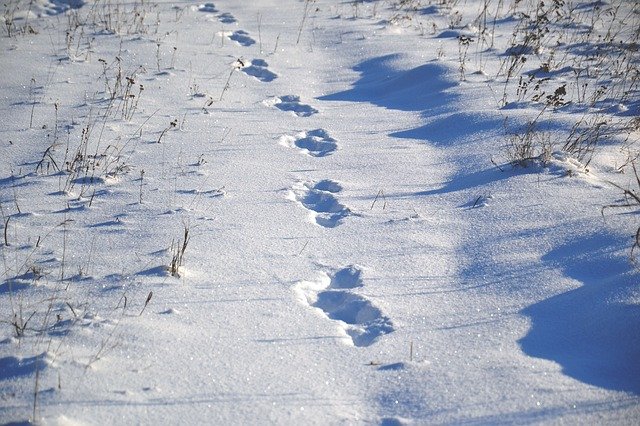 Movement
Movement
Snow on the ground will give you an advantage for finding tracks. A dusting of fresh snow is ideal for looking at tracks.
A great place to look for tracks is near a bird feeder. Birds sometimes hop in the snow under the feeder. Squirrels, mice and voles visit too, often eating the seeds that have fallen to the ground.
When your child finds tracks, ask them to study the shape of each footprint to help identify it. They should also look for toe marks. The toes point the way the animal was going so follow the tracks to see where they lead. They may reveal an animal searching for food, perhaps even following another animal.
Suggest that your child makes drawings of the tracks in their field journal, and record when and where they saw them. Learn more about tracking here.
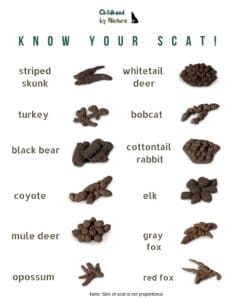 Scat
Scat
To be a good nature detective, you have to keep your eyes, ears and even your sense of smell open for any sign left behind.
Just like us, animals eat, digest, and defecate. Convenient if you're looking for clues on the daily life of wildlife. You can get a bunch of interesting information from an unassuming pile of poop, otherwise known as scat. Just by looking at a mound of scat, some nature experts can tell when it was left behind, what's in it and then identify the animal and eventually pinpoint its location.
When your child finds scat, they can ID it (use our free, downloadable resource or any other you like) as well as look for signs of what the animal has been eating. Bear scat could have berries in it. Fox and coyote scat could have hairs and bones from prey the animals have eaten, as well as berries or insects. Learn more about how to ID scat here.
Hopefully, your child will discover that there is much to discover about the natural world even in a quiet winter landscape. With a little fine-tuning of their nature detective skills, they will uncover a world of wonder!


